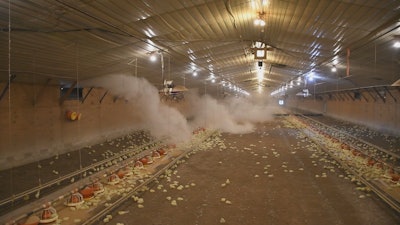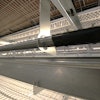
Negative pressure ventilation is the most common method of ventilating poultry houses during cold weather worldwide. Exhaust fans are used to bring in a precise amount of fresh air, while air inlets help not only distribute the fresh air uniformly throughout a house but also direct the cool incoming air along the ceiling. As the cool outside air moves across the ceiling, it will be warmed and dried by the heat produced by radiant heaters/furnaces, as well as by heat produced by birds before it moves down the floor level. The longer the cool incoming air moves along the ceiling, the more the incoming air will be warmed and dried, and the more control a producer will have over house temperature, air quality, litter moisture, and, in turn, broiler performance, health and welfare.

















